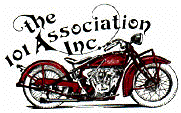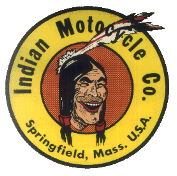Not thinner than 3,6mm, really the lining should be starting out thicker than that and ground or milled or turned to the actual drum size with the shoes mounted on the backing plate. That will reduce any distortion the shoes can have, wrong arc or twist. The more care you are taking in consider with the front brake details the better it works. The handlebar lever range is very small and all is needed in order to be able to squeeze the lever far and hard enough.
The backing plate needs to pivot on the hub bearing nut fairly precise or you can't have a small enough play between the drum and lining without drag when the backing plate rattles and vibrates during run. The center hole in the hardened backing plate washer is always worn oval, the hole can be ground larger and round but the hardened bearing nut needs to be redone to fit the hole then.
Cam play in the backing plate bushing is important, when the cam cants in the bushing you loose leverage at the handlebar. The cam flats are important and might need a slight skimming to reduce the wear just at the important tip, not to be rounded off- If the tips are just worn slightly more rounded, more lever range than you think is lost by that.
The eye is fooled by the shape of the cam when the ends are half round as they are original, the ends very well could be square and they are on most other brake brands. The contact point to the shoes is only at the edge where the flat ends. The flats is never in use, as soon as you adjust the wire with the adjuster on the backing plate in order to take up the idle play, the cam is turned a few degrees. So the shoes always rest on the very tip of the cam. When you brake, and brake hard the cam is only turned very very little from default setting, a couple of degrees.
If the cam edge is rounded only a bit from new and the shoe contact point is worn, the ratio is changed and it takes a few more degrees to turn the cam in order to transport the shoe the distance it needs to contact the drum. That means the lever at the handlebar sinks deeper in, and the brake feels ineffective and spongy.
The shoes might need a slight skimming of the flats to reduce the point wear from the cams. And the play at the brake shoes rear pivot must not be large. No slop allowed front to back on the pin and the shoes must not touch each other. If it is left untreated all that is making the brake feel spongy and the handlebar lever range is too small to take up the play in the brake.
And of course the drum needs to be round, preferable ground to adjust the very common fault, distorted conical! Best is to grind when the rim is assembled and trued.
When all that is fixed you'll find that 3,6mm thick lining is far too thin.
On the Occhio lungo blog there is an excellent article on how to rivet the brake linings. Pay attention to the type of rivets, preparation and method of riveting, it is important! Front linings can be glued in a modern fashion without ill effects, but the opinions are divided on what method is best with the rear linings, riveted or glued.
https://occhiolungo.wordpress.com/2010/05/20/how-to-reline-drum-brakes-and-band-brakes/


